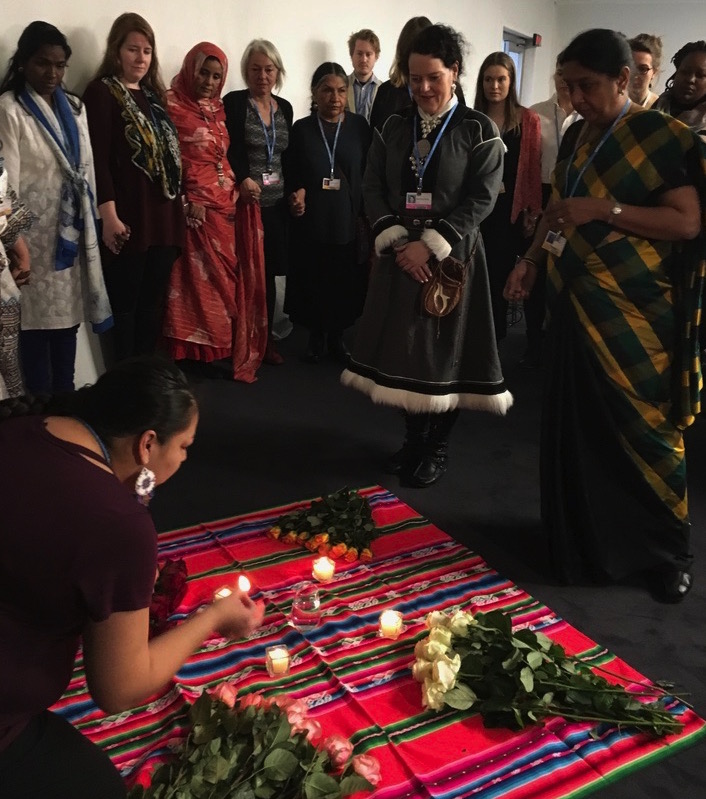By Ayuska Motha
One of the most moving days at COP23 was the Indigenous Women’s Day, November 15th, 2017. The WGC caucus gave the floor over to a group of indigenous women who opened with a candle lighting ceremony and prayer to unify all of us coming from all corners of the globe. Four candles were lit by indigenous women leaders from Europe, Asia, Africa and Central/South America. After that, a panel of indigenous women from North America, New Zealand, Scandinavia, Africa, and other regions briefly shared their concerns and viewpoints with those in the room.

There was an underlying commonality that these indigenous peoples have historically had their land and resources taken from them and that today they are being confronted with the impacts of historic and current natural resource extraction and degradation, as well as the effects of climate change. Many of the leaders were very concerned about further degradation and future projects. Two young Maori representatives spoke of a huge surveying ship off the coast of New Zealand very recently searching for offshore oil reserves. The North American Native Indian representative of Canada, spoke of oil company plans to drill on tribal land, Standing Rock and other pipeline projects as well as the many dangers that her people face.
Later in the afternoon, several of the women were part of a more in-depth discussion of similar issues as part of a panel “Women for Climate Justice Leading Solutions on the Frontlines of Climate Change”. Prior to Indigenous Women’s Day, I had not known that traditional indigenous territory makes up 22 percent of the world’s land surface and contains 80 percent of the planet’s biodiversity. For centuries, indigenous people have been using traditional knowledge to manage their natural resources. Now they are also using their knowledge to mitigate and adapt to climate change.
One of the milestone achievements to come out of COP23 was the adoption of the Indigenous Peoples Platform. The Platform will give local communities and indigenous people a greater role in the decision-making process, enable the exchange of knowledge, technologies, practices and will hopefully be mainstreamed in the countries' national legislations. The Platform is also seen as a way to strengthen and protect traditional knowledge.